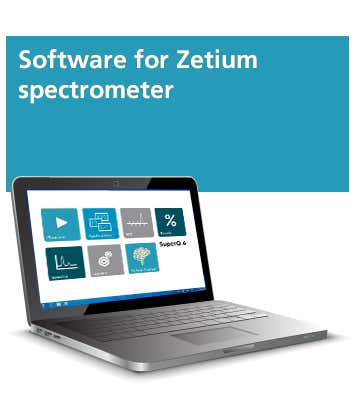Features
Routine analysis and standardized methods
SuperQ software is straightforward and makes the Zetium spectrometer accessible to administrators and routine operators with a minimum of training time. The software incorporates 20 years of experience and has been translated into many languages. It generates analysis programs optimized for the elements to be measured. These resulting programs can then be ported to other instruments to enable standardization of analytical methods within a company.
Intelligent software
SuperQ incorporates more than 20 years of collective global WDXRF analytical experience. Designed for analysts and technicians alike, simple method development is achieved by an intuitive user interface. Simply select the elements of interest and a step-by-step program will develop optimal analytical conditions. Full analytical flexibility is retained providing development control for process optimization. An example is the choice between fixed or variable times or desired precision. Additional features such as programmable wake-up and sleep settings are included as well as drift correction before operators begin measurement.
Flexible measurement procedures
SuperQ provides a comprehensive measurement strategy which is operated in a user-friendly and intuitive visual sample changer map. Manual measurements are made simply by placing samples in to the spectrometer measuring chamber, entering an ID and choosing a method. Alternatively the sample changer can be engaged by selecting an application, locating a sample on the sample changer, entering an identification and automatic measurement will begin. This entire process can be automated by the addition of a barcode reader (an optional item available for Zetium). SuperQ includes a simple script language for easy integration of barcodes and LIMS communication pathways. Sample identities can be imported through batch files in LIMS environments and operators can then simply place samples on the instrument sample changer.
Enhanced flexibility and convenience
Designed for operational flexibility and convenience SuperQ includes many additional features that benefit the most demanding industry applications. These include continuous sample additions to the measurement queue without measurement interruption, a Quick Start menu for easy measurement by all and Priority Position analysis for rush sample measurement without interrupting a batch process.
Advanced analytical requirements
The analytical heart of SuperQ includes state-of-the-art proven spectra interpretation, data treatment and matrix correction algorithms. Once a method has been created the routine operation is straightforward and intuitive. Visual menus permit routine operation by all. SuperQ provides a flexible and logical reporting format and is ready for automation. Furthermore, SuperQ can seamlessly deliver results to all LIMS formats and optimal efficiency can be achieved by the simple addition of a barcode reader.
Modules and documentation
Our Quick Start Guides help you get up and running easily with SuperQ software.
- Download the SuperQ5 Quick Start Guide
- Download the SuperQ4 Quick Start Guide
- System Health Evaluator Quick Start Guide ED1
Optional modules
Although the software contains all features needed to obtain accurate results, it can also be augmented to meet advanced analytical requirements while keeping the usability for routine operators simple. Designed for the most stringent analytical protocols, SuperQ includes a wealth of expandable optional modules.
Boosting SuperQ capabilities
- Use Omnian standardless analysis to deal with applications where standards are unavailable or when qualitative screening measurements provide insufficient information.
- Use Oil-Trace to analyze diverse types of oils with unknown amounts of oxygen.
- Use SPC for statistical trending in manufacturing environments.
- Use UAI to integrate the system into an automated laboratory.
- Use Stratos to analyze layered or coated samples by means of XRF. Omnian can be included when no bulk standards are available.
- Use Enhanced Data Security to support compliance with regulations like FDA 21 CFR Part 11.
- Use Pro-Trace for accurate trace analysis for rock and geological samples and mining.
- Use Type Standardization to analyze grades of similar metals.

